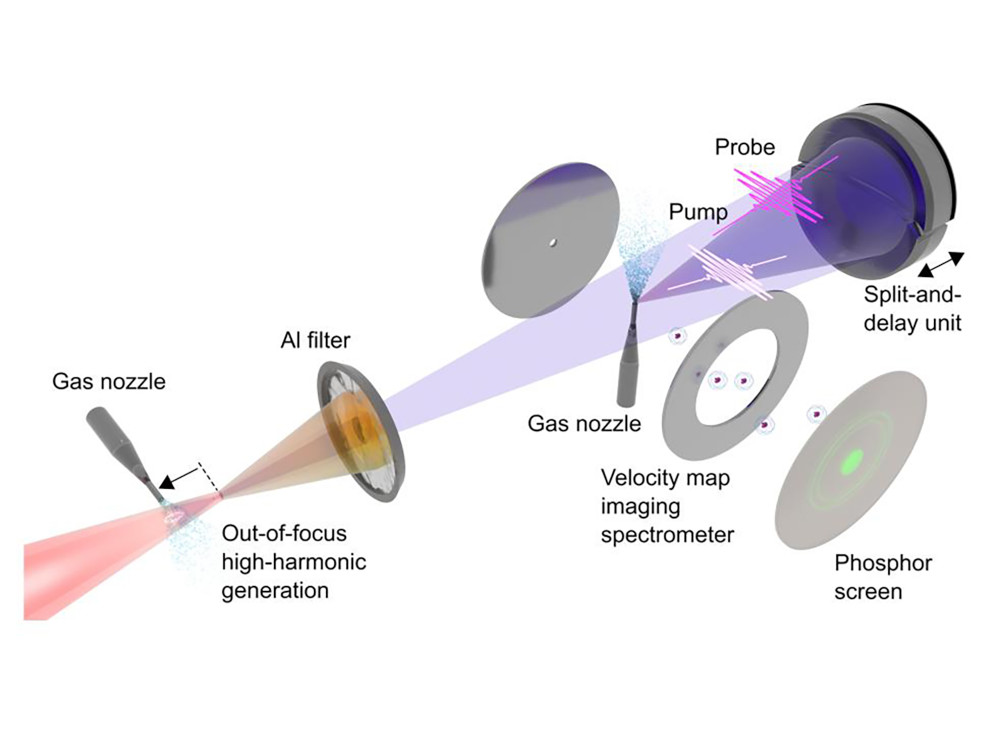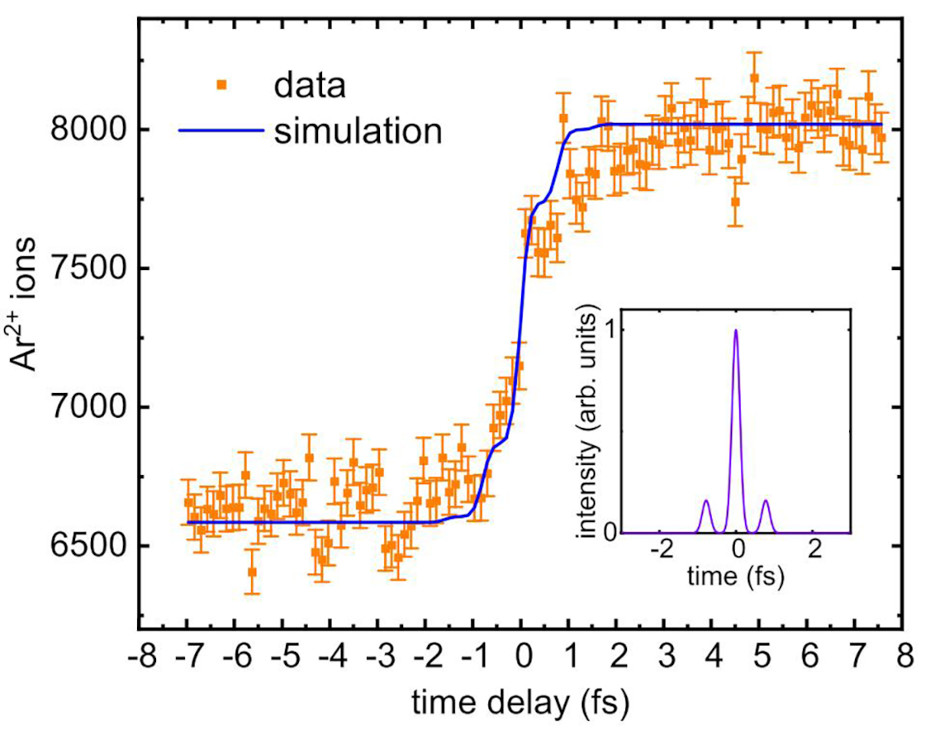
08 Mar A new chapter in attosecond spectroscopy
A team of researchers at the Max Born Institute (MBI) in Berlin reported the demonstration of attosecond pump-attosecond probe spectroscopy (APAPS) at a repetition rate of 1 kHz for the first time. This was made possible by the development of a compact, intense attosecond source.
Current attosecond techniques have one major drawback: in order to record a movie in a pump-probe experiment, an attosecond pulse must be combined with a femtosecond pulse. This leads to limitations in the investigation of electron dynamics on attosecond time scales. Although a few demonstration experiments with APAPS have been carried out so far, these were based on large setups and specialized laser systems at low repetition rates of 10 to 120 Hz.
New approach for high pulse energies
The MBI team has now found an alternative approach that allows them to perform APAPS in a much more compact setup. To this end, they have used a turnkey laser operating at your repetition rate of 1 kHz. The researchers generated attosecond pulses in a gas jet using an infrared laser. In contrast to how attosecond pulses are usually generated, they did not place the gas jet close to the laser focus, but at some distance from it. This made it possible to generate attosecond pulses with a relatively high pulse energy and a small virtual source size. This allowed the attosecond pulses to be focused to a high intensity.
Ionization process confirms APAPS
In their APAPS experiment, the researchers ionized argon atoms with a first attosecond pulse, which led to the generation of singly charged Ar+ ions. These were interrogated by a second attosecond pulse at different time delays, resulting in the production of doubly charged Ar2+ ions. The measured increase in the observed Ar2+ ions on an extremely fast time scale showed that the pump and probe pulses actually have a duration in the attosecond range.

The measurement demonstrates that the pump-probe pulses generate Ar2+ ions on an attosecond time scale and must therefore be attosecond pulses. Image: MBI / Bernd Schütte
Goal: Faster measurement
According to the researchers, the moderate pulse energies of the infrared driver pulses used in this study pave the way for carrying out APAPS experiments at even higher repetition rates up to the megahertz range in the future. The laser systems required for this are either already available or under development.
Original publication:
[Martin Kretschmar, Evaldas Svirplys, Mikhail Volkov,Tobias Witting, Tamás Nagy, Marc J. J. Vrakking, Bernd Schütte, Compact realization of attosecond-pump attosecond-probe spectroscopy, Science Advances 21 Feb 2024 Vol 10, Issue 8]
Source: mbi-berlin.de
Image: MBI / Mikhail Volkov






